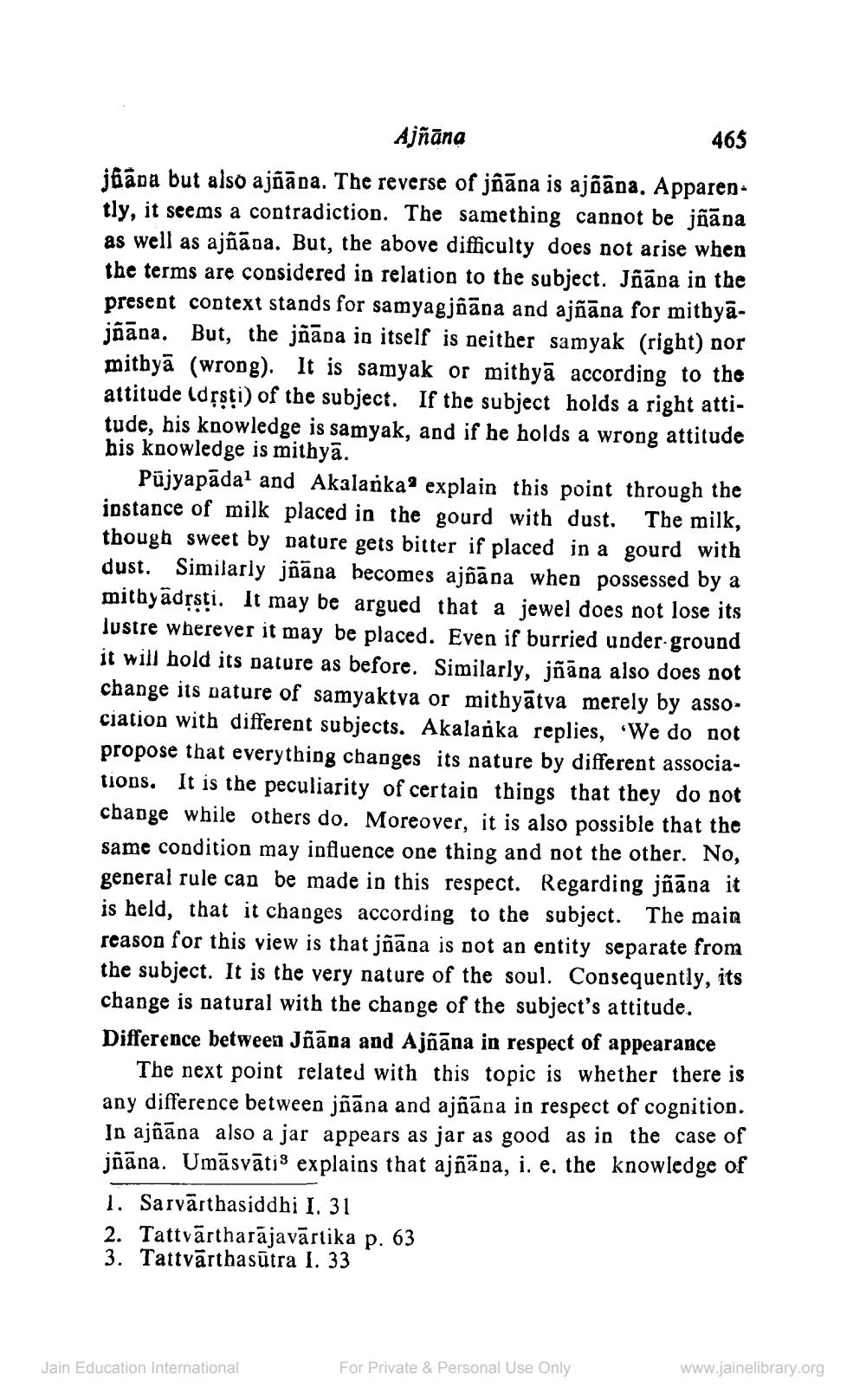________________
Ajñāna
465 jbapa but also ajñāna. The reverse of jñāna is ajõāna. Apparently, it seems a contradiction. The samething cannot be jñāna as well as ajñāna. But, the above difficulty does not arise when the terms are considered in relation to the subject. Jñāna in the present context stands for samyagjñāna and ajñāna for mithyajñāna. But, the jñāna in itself is neither samyak (right) nor mitbyā (wrong). It is samyak or mithyā according to the attitude (dřsti) of the subject. If the subject holds a right attitude, his knowledge is samyak, and if he holds a wrong attitude his knowledge is mithyā.
Pūjyapādad and Akalanka' explain this point through the instance of milk placed in the gourd with dust. The milk, though sweet by nature gets bitter if placed in a gourd with dust. Similarly jñāna becomes ajñāna when possessed by a mithyadrsti. It may be argued that a jewel does not lose its lustre wherever it may be placed. Even if burried under-ground it will hold its nature as before. Similarly, jñāna also does not change its nature of samyaktva or mithyātva merely by association with different subjects. Akalarka replies, We do not propose that everything changes its nature by different associations. It is the peculiarity of certain things that they do not change while others do. Moreover, it is also possible that the same condition may influence one thing and not the other. No, general rule can be made in this respect. Regarding jñāna it is held, that it changes according to the subject. The main reason for this view is that jñāna is not an entity separate from the subject. It is the very nature of the soul. Consequently, its change is natural with the change of the subject's attitude. Difference between Jñāna and Ajñāna in respect of appearance
The next point related with this topic is whether there is any difference between jñāna and ajñāna in respect of cognition. In ajñāna also a jar appears as jar as good as in the case of jñāna. Umāsvātis explains that ajñäna, i. e, the knowledge of 1. Sarvārthasiddhi I. 31 2. Tattvārtharājavārtika p. 63 3. Tattvārthasūtra I. 33
Jain Education International
For Private & Personal Use Only
www.jainelibrary.org




